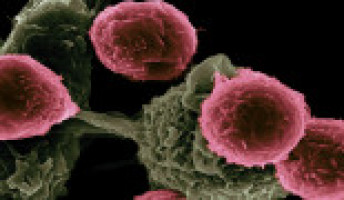
In a paper published in Proceedings of the National Academy of Sciences of the United States of America (PNAS) recently, a team led by Prof Wang Junfeng from the High Magnetic Field Laboratory (HMFL), Hefei Institutes of Physical Science (HFIPS) of the Chinese Academy of Sciences, biomimetically synthesised soft ferromagnetic nanoparticles with high magnetic targeting and tumour tissue penetration based on studying the biomineralisation mechanism of natural "biocompass" ― magnetotactic bacteria.
Targeted delivery of anti-tumour drugs can effectively improve the efficacy and minimise the toxicity of drugs.
Due to the limitations of the complexity of the tumour microenvironment, the average tumour targeting efficiency of nanodrugs is less than 1%, which constitutes one of the bottlenecks in tumour therapy.
Animals like pigeons, turtles, lizards can use the geomagnetic field to navigate.
The bacteria, after obtaining iron from the surrounding environment, can move directionally along the direction of magnetic field in the geomagnetic field or artificial magnetic field.
The magnetosomes offer a wide range of application prospects thanks to their obvious advantages in magnetic properties, biocompatibility and stability.
However, the natural magnetosome particles are easy to accumulate and precipitate in the external environment, which hinders their ability to penetrate the lesion area and the potential danger of deposition in the blood vessels.
In this work, researchers proposed a new strategy for biomimetic synthesis of magnetosomes.
They constructed a magnetosome-like nanoreactor, and reconstructed the microenvironment of magnetosomes biomineralisation of magnetotactic bacteria in vitro.
"The magnetosome-like nanoparticles synthesised with this method performed excellently," said MA Kun, first author of the paper, "The DSPE-mPEG–coated magnetosome-like magnetic nanoparticles (MNPs) successfully penetrated the lesion area of a tumour mouse model."
The experimental findings demonstrated the improvement by an order of magnitude in the targeting and penetrability of biomimetic magnetosomes in tumour tissues compared with other magnetic nanodrugs.
This work not only provided an efficient carrier for magnetic targeting delivery of nanodrugs, and but also expanded a new model system for studying the biomineralisation mechanism of magnetotactic bacteria in vitro.
Article: Magnetosome-inspired synthesis of soft ferrimagnetic nanoparticles for magnetic tumour targeting
Source: Hefei Institutes of Physical Science, Chinese Academy of Sciences
We are an independent charity and are not backed by a large company or society. We raise every penny ourselves to improve the standards of cancer care through education. You can help us continue our work to address inequalities in cancer care by making a donation.
Any donation, however small, contributes directly towards the costs of creating and sharing free oncology education.
Together we can get better outcomes for patients by tackling global inequalities in access to the results of cancer research.
Thank you for your support.